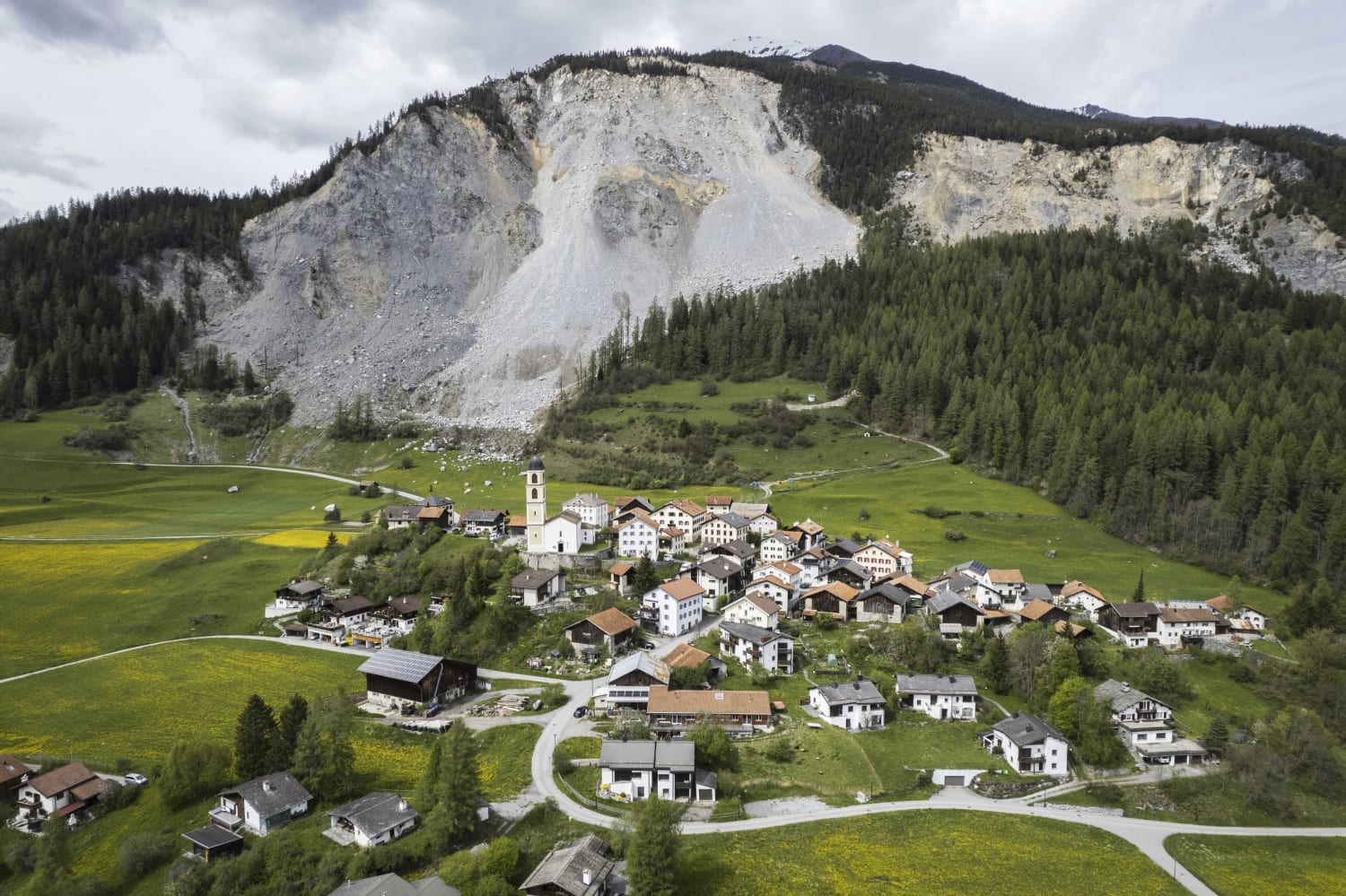
High in the Swiss Alps, the picturesque landscape of a small village might also be your undo.
By sunset on Friday, the 100 residents of Brienz must evacuate their homes — or risk being crushed by 70 million cubic feet of rock. Officials have warned that a large chunk of the Linzerhorn mountain, which looms over the village’s red clay roofs and rustic green shutters, could be about to collapse as soon as next week.
“The mood in the village is very sad. People in the village are torn apart,” Elizabeth Arbagos, 85, who has lived here for more than half a century, told NBC News.
Perched on a mountainside at an altitude of 3,800 feet, Brienz’s geological predicament is nothing new.
The village 15 miles from Davos has been sliding down the valley likely since the last ice age 11,000 years ago, according to the local government website. Officials say climate change puts modern-day Switzerland and other countries at greater risk from natural disasters, as higher temperatures lead to increased erosion.
What’s worrying geologists now is a 70-million-cubic-foot “island” of rock above the village that has “accelerated dramatically” since the fall, Christian Gartmann, the district’s crisis manager, wrote on his website last month.
On Tuesday, that motion prompted officials to move into the “orange phase,” which means a rockslide or landslide is expected within one to three weeks. All residents and small animals must be gone by 6pm on Friday (noon ET), and they will only be granted temporary access during the day to return.
This will turn phasic red once a collapse is thought to be 3 to 10 days away, necessitating the removal of livestock and prohibiting any re-entry. The last warning, the blue phase, means that a crash is imminent.
“I am so sad that I had to leave,” said Arpagaus with a sigh, remembering the “beautiful view” from her home which she says she now misses so much and which may soon be lost forever.
The mother-of-five lived alone but said residents got together regularly for hiking groups, women’s clubs and other gatherings.
“We knew something might happen one day,” she said, describing occasional rockfalls over the years. “But now that it’s so imminent, it’s making it difficult.”
The most likely scenario, at 60%, is a series of rockslides causing damage to the upper edge of the village, Gartmann wrote. He said there was a 30% chance of a slow-moving landslide traveling three to six feet a day, causing “massive damage” if it reached the village.
Most likely, but the most devastating would be a “major rockslide” that would cause “very serious” damage to the village and the surrounding area, said Gartman, who gives that scenario a 10 percent probability.
He said the outcome “cannot be predicted until the last minute”.
Residents are kept up to date with texts, emails, and tweets. If officials believe a “rapid” evacuation is needed, Prins’ website said, alarms will go off across the valley.
Switzerland’s main insurers said they would cover the damage, although residents would have to partially fund their temporary relocations, the village website reported.
For many, it’s not about the money. Their tight community now finds itself scattered across the region in temporary accommodation, where they may have to stay for weeks or months, depending on how long the emergency lasts.
“There’s nothing you can do, you have to get through this and I’m a strong woman,” Arpagos said. “The whole world is thinking of us,” she added, referring to the widespread news coverage.
Before smashing her birthplace to rock or burying it completely, there’s something she needs to come back to For the Friday before the city is closed.
“I’ll be back again today,” She said , “to pick up a frying pan.”

“Travel specialist. Typical social media scholar. Friend of animals everywhere. Freelance zombie ninja. Twitter buff.”





More Stories
Taiwan is preparing to face strong Typhoon Kung-ri
Israel orders residents of Baalbek, eastern Lebanon, to evacuate
Zelensky: North Korean forces are pushing the war with Russia “beyond the borders”